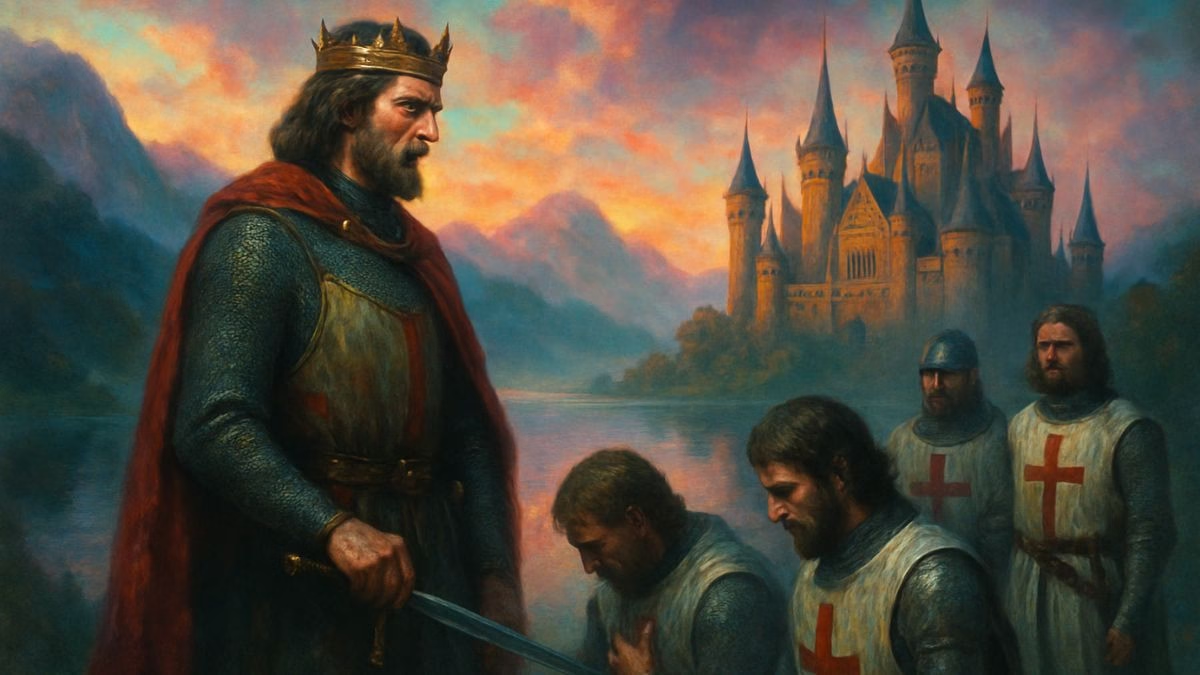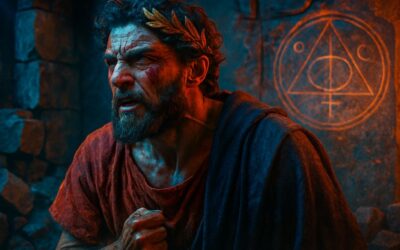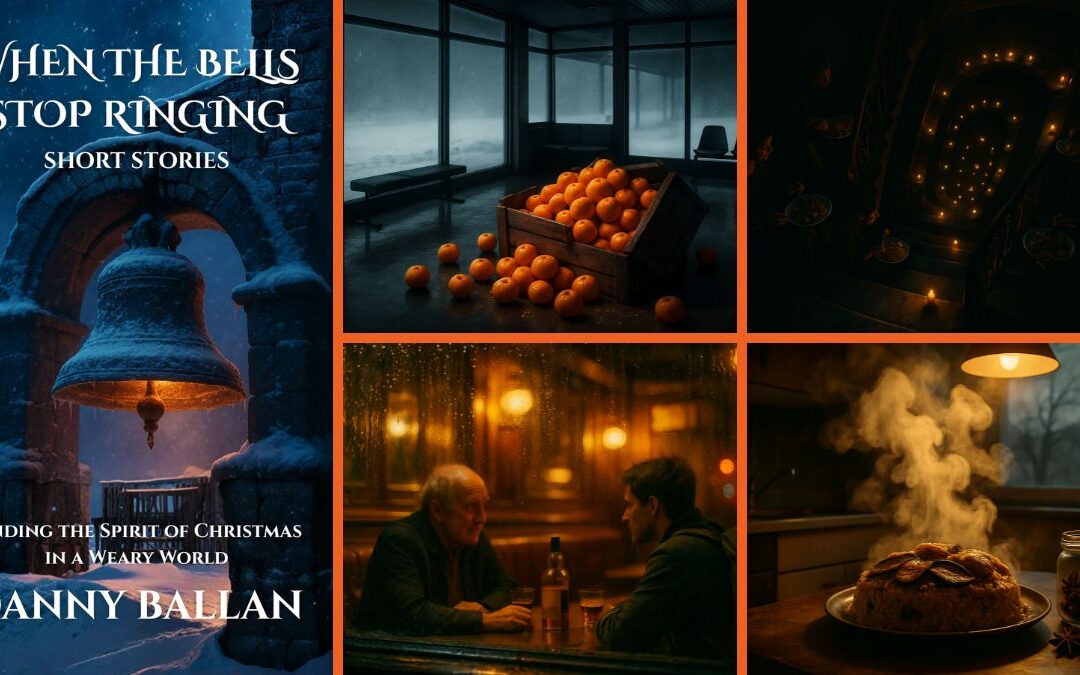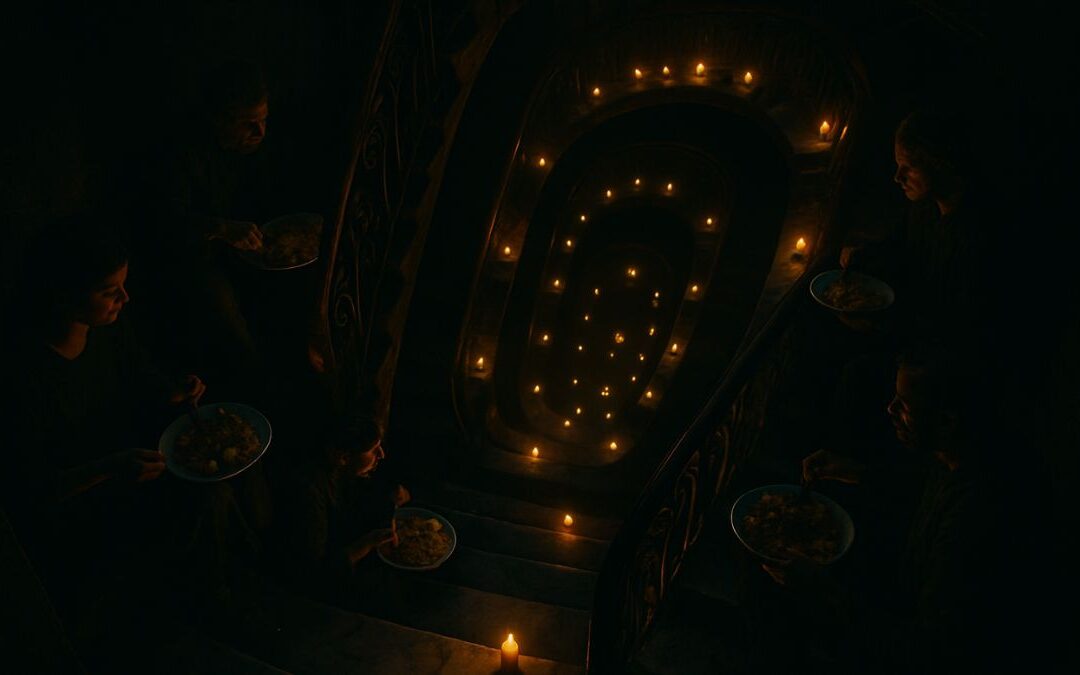Introduction
There are names that echo through the halls of history and myth, names that feel less like historical footnotes and more like foundational pillars of our collective imagination. And perhaps none echoes louder than Arthur.
King Arthur. The name itself conjures a cascade of indelible images: a boy pulling a gleaming sword from an unyielding stone; a shining city called Camelot, a beacon of justice and light in a dark age; a magnificent round table, where the greatest knights in Christendom sat as equals; a wise, enigmatic wizard named Merlin, who could shape destinies and read the future in the stars. It’s a story of chivalry, of romance, of epic quests, of profound love, and of heartbreaking betrayal.
For centuries, this story has been a bottomless well of inspiration for poems, novels, paintings, and films. It has become a cultural touchstone, a shorthand for a lost golden age of nobility and honor. But beneath the shimmering veneer of myth, a tantalizing question has persisted, debated by scholars and dreamers alike: Was any of it real?
Was there a man of flesh and blood named Arthur who led the Britons against invading forces on the misty battlefields of a bygone era? Or is he merely a literary phantom, a composite hero stitched together from scraps of folklore and the boundless imagination of medieval writers?
Today, we are embarking on a quest of our own. We’re not seeking the Holy Grail, but something almost as elusive: the truth behind the legend of King Arthur and his fabled Camelot. So, what are the burning questions we’re going to tackle?
First, we’ll be detectives of history, sifting through the sparse and shadowy records of post-Roman Britain. We’ll ask: What is the historical evidence for Arthur’s existence? Who was the real figure that might have inspired the myth?
Next, we’ll trace the legend’s incredible evolution. How did a gritty, 6th-century warlord, if he existed at all, transform into the glittering, 15th-century king in shining armor we recognize today? We’ll follow the literary breadcrumbs from Welsh poetry to French romance to the definitive English epic.
Then, we’ll explore the iconic characters and symbols that populate this world. What is the true nature of Merlin? What does the Round Table truly represent? And how did the tragic love story of Lancelot and Guinevere become the very thing that unraveled this perfect kingdom?
And finally, we’ll confront the ultimate question: Why? Why has this story, above so many others, held such a powerful grip on us for over a thousand years? What is the enduring power of Camelot?
Be warned, this is a sprawling tale, a tapestry woven over a millennium. A single podcast episode can only trace the most vibrant threads. True mastery of this topic, a genuine appreciation for its depth and complexity, demands that you follow this path further, to read the original texts, to explore the scholarly debates, and to lose yourself in the rich world that awaits. Think of this as your map to the edge of the enchanted forest. The journey within is yours to take.
So, sharpen your wits, saddle your horse, and prepare to ride with us into the heart of the greatest legend Britain has ever produced.
The Legend of King Arthur and Camelot
To understand the story of King Arthur, you have to begin not with a shining castle, but with a collapsing empire. The year is 410 AD. The Roman legions, who had occupied and controlled the island of Britain for nearly four centuries, are recalled to defend the heart of their crumbling empire. They leave behind a populace of Romanized Celts—the Britons—and a massive power vacuum. Into this vacuum pour waves of pagan Germanic tribes from the continent: the Angles, the Saxons, and the Jutes. The so-called Dark Ages had begun in Britain, an era of chaos, violence, and uncertainty.
It is out of this historical crucible that the figure of Arthur first emerges. There is no contemporary account that names a “King Arthur.” Instead, we have a few tantalizingly brief mentions in later Welsh chronicles. The most significant is from a 9th-century monk named Nennius, in his Historia Brittonum, or “History of the Britons.” Nennius describes a great war leader, a dux bellorum, named Arthur, who was not a king but a commander who led the Britons in twelve major battles against the Saxons, culminating in a decisive victory at the Battle of Mount Badon. This is our historical ghost. A Romano-British general, likely named Artorius, who rallied his people and, for a brief, shining moment, held back the tide of invasion. This Arthur would have worn Roman-style armor, not a knight’s plate mail, and his stronghold would have been a crude wooden hillfort, not a towered castle of white stone.
So, how do we get from a gritty warlord to the king of legend? The answer is a literary snowball effect that rolled through the centuries, picking up new layers of myth and magic with each telling. For hundreds of years, Arthur was a figure in Welsh and Breton folklore, a hero of the Celts. But the game truly changed in the 12th century, with a man named Geoffrey of Monmouth. In his wildly popular book, Historia Regum Britanniae—”The History of the Kings of Britain”—Geoffrey took the warrior Arthur and, with a breathtaking stroke of literary invention, crowned him king. He gave him a kingdom, a magical sword called Caliburn, a powerful wizard advisor named Merlin, and a detailed, epic life story, including his final battle with his treacherous nephew, Mordred. Geoffrey’s book was a medieval bestseller, but it was about as historically accurate as a superhero movie. It was brilliant propaganda, designed to give the British people a heroic national origin story to rival the epics of Greece and Rome.
Geoffrey laid the foundation, but the French built the castle. In the late 12th century, the tales of Arthur crossed the channel to France, where poets like Chrétien de Troyes took over. The French weren’t interested in Saxon wars; they were interested in romance, courtly love, and knights performing daring deeds for the honor of their ladies. Chrétien de Troyes and his contemporaries added some of the most crucial elements to the story. They created the character of Sir Lancelot, the greatest knight in the world. They invented the love affair between Lancelot and Arthur’s queen, Guinevere. And they introduced the concept of the spiritual Quest for the Holy Grail. It was the French who gave us Camelot as a center of chivalry and high culture. The story was no longer just a British national epic; it was now a sophisticated European romance.
The legend became a sprawling, sometimes contradictory, mess of different stories told by different authors. The final, and most important, piece of the puzzle was put in place in the 15th century by an English knight named Sir Thomas Malory. While imprisoned for a litany of crimes including theft, extortion, and assault—which is a whole other story—Malory undertook the monumental task of gathering and translating these disparate French and English Arthurian tales into one cohesive narrative. The result was Le Morte d’Arthur, “The Death of Arthur.” It is Malory’s version that solidifies the legend as we know it today. He gives us the definitive telling of the sword in the stone, the rise and fall of the Round Table, the tragic love triangle, the Grail Quest, and Arthur’s final, bittersweet end, where he is carried away on a barge to the mystical Isle of Avalon to be healed of his wounds, promising one day to return.
So let’s talk about that iconic fellowship. The Knights of the Round Table. The idea itself is a stroke of genius. The table is round so that no one man, not even the king, sits at the head. It’s a symbol of equality and fraternity. To become a knight of the Round Table was to be judged on merit and virtue, not birthright. It represented a utopian ideal, an attempt to create a perfect society governed by a strict code of honor: the code of chivalry. Knights swore to protect the weak, uphold justice, be merciful, and show courage. Of course, the tragedy of the story is that these noble men were all too human. Their pride, their rivalries, and their personal desires ultimately tore the fellowship apart.
At the center of it all is the great love triangle, the emotional core that drives the tragedy. Arthur, the noble king, bound by duty. Guinevere, his beautiful queen. And Lancelot, his best friend and greatest knight. The love between Lancelot and Guinevere is portrayed as both passionate and pure, but it is also an act of profound betrayal. It represents the timeless conflict between personal desire and public responsibility. This affair festers at the heart of Camelot, a poison that slowly corrupts the court and gives Arthur’s enemies, like his illegitimate son Mordred, the ammunition they need to bring him down.
And then there’s the Quest for the Holy Grail, the cup that Christ supposedly drank from at the Last Supper. In the legend, the appearance of the Grail at Camelot sends the knights on a sprawling spiritual quest. On the surface, it’s a noble Christian endeavor. But it also serves to scatter the knights, draining Camelot of its best and brightest. Many knights perish, and only the most spiritually pure, like Sir Galahad, can succeed. The quest marks the beginning of the end for the Round Table, shifting its focus from earthly justice to a heavenly prize that most of them can never attain.
Finally, we have the two figures who bookend Arthur’s life: Merlin and Mordred. Merlin is not just a court magician with a pointy hat. He is an archetype of the wise advisor, a shamanistic figure with one foot in the world of men and one in the world of ancient, wild magic. He orchestrates Arthur’s birth and ascent to the throne, but his vision for a united, just kingdom is ultimately undone by the very human failings he cannot control. Mordred is his dark opposite. He is Arthur’s incestuous son in many versions of the tale, the living embodiment of Arthur’s past sins. He is the traitor within, the force of chaos and nihilism that exploits the cracks in Camelot’s foundation to bring the whole glorious edifice crashing down.
The final battle between Arthur and Mordred is a cataclysm. The dream of Camelot dies on the battlefield of Camlann. Brothers kill brothers, the Round Table is destroyed, and Arthur, mortally wounded after killing Mordred, is taken to Avalon. This ending is not a happy one, but it is a powerful one. It gives the legend its poignancy and its enduring power. Camelot is not just a story of a golden age, but a cautionary tale about how even the noblest of ideals can be undone by human weakness.
So why do we still tell this story? Because it operates on so many levels. It’s a fantastic adventure story. It’s a political allegory about the ideal state. It’s a psychological drama about love and betrayal. It’s a spiritual quest for meaning. Arthur himself is a malleable figure, an archetype. He is “The Once and Future King,” a symbol of hope and righteous leadership that can be endlessly re-interpreted for new generations. He represents the dream of a just world, a “brief, shining moment” of Camelot that we long for in our own, often dark and complicated times. The legend endures because it tells us that such a world, however ephemeral, is worth striving for.
Focus on Language: Vocabulary and Speaking
That was quite a journey through the mists of time, wasn’t it? We wrestled with history, legend, and the evolution of a story over a thousand years. Now, as we always do, let’s pivot and zoom in on some of the specific language we used. My goal here is to pull out some of the richer, more versatile words and phrases from the script, break them down, and show you how you can use them to make your own English sound more articulate and sophisticated. We’ll look at about ten of them, exploring what they mean and how they fit into everyday conversation.
Let’s start with a word I used to describe figures like Merlin and Arthur himself: archetype. I said, “Merlin is an archetype of the wise advisor,” and “Arthur himself is a malleable figure, an archetype.” An archetype is a perfect or typical example of a particular person or thing. It’s the original pattern or model from which all other things of the same kind are copied. Think of it as a character template. The “wise old mentor” (like Merlin or Dumbledore), the “rebel hero” (like Robin Hood or Han Solo), the “traitor” (like Mordred or Judas)—these are all archetypes. You can use this word to describe recurring patterns you see in stories, people, or situations. For instance, “The demanding, brilliant boss is a common archetype in workplace comedies,” or “She is the archetype of the dedicated student.”
Next up, a word that is central to the entire legend: chivalry. I mentioned the “code of chivalry” that the knights followed. Today, we think of chivalry as men being polite to women—holding doors, pulling out chairs. But historically, it was a much broader medieval code of conduct for knights, encompassing bravery, honor, military skill, and courtesy. It was an entire ethical system. While you might not discuss the medieval code often, you can use the word to talk about courteous and honorable behavior. You could say, “In an age of online trolling, a little old-fashioned chivalry wouldn’t go amiss,” or you might joke, “He offered me his seat on the bus. I guess chivalry isn’t dead after all.”
Here’s a fantastic word for anyone who loves history: anachronism. I noted that a 6th-century Arthur wouldn’t wear a knight’s plate mail, as that would be a historical error. An anachronism is something or someone that is not in its correct historical or chronological time. It’s an error in timeline. A famous example is a wristwatch appearing in a movie set in ancient Rome. It’s a great word to have when you’re analyzing films or books. You could say, “The use of modern slang in the historical drama was a glaring anachronism,” or more broadly for something that feels out of place in the modern world: “His formal, handwritten letters feel like a charming anachronism in the age of email.”
Let’s talk about a powerful adjective: seminal. I could have described Geoffrey of Monmouth’s or Thomas Malory’s work as seminal. A seminal work, book, or event is one that is highly original and influences the development of future events or work. It’s a seed from which many other things grow. It’s a stronger, more academic word than just “important” or “influential.” You might say, “Einstein’s 1905 paper on special relativity was a seminal work in modern physics,” or “That album was a seminal moment in the history of rock music.”
Here’s a lovely, evocative phrase: to be steeped in. I could have said that the legend of Arthur is “steeped in folklore and magic.” To be steeped in something means to be completely surrounded by or filled with a particular quality or influence. Think of a tea bag steeping in hot water—it becomes completely saturated. You can use this to describe places, people, or things that are rich with a certain characteristic. “The old city is steeped in history,” or “Her family is steeped in musical tradition.”
Now for a phrase that has become a part of the English language thanks to this very legend: the Holy Grail. We talked about the quest for the Grail. But in modern usage, “the Holy Grail” of something is used metaphorically to mean a thing that is extremely desirable but very difficult or impossible to obtain. It’s the ultimate prize or goal in any field. For example, “For physicists, a unified theory of everything is the Holy Grail,” or “Finding a cheap, clean, and limitless source of energy is the Holy Grail of environmental science.”
Let’s consider an idiom that fits the tragic themes of the story perfectly: a double-edged sword. The love between Lancelot and Guinevere was a double-edged sword for Camelot—it was a source of great passion but also the cause of its destruction. A double-edged sword is something that has both positive and negative consequences. It cuts both ways. This is an incredibly useful phrase for analyzing complex situations. You could say, “Fame is a double-edged sword; it brings wealth, but it also destroys your privacy,” or “The internet is a double-edged sword, providing access to information while also spreading misinformation.”
Here’s a great adjective for debates: contentious. The question of whether Arthur was a real person is a contentious issue among historians. Contentious means causing or likely to cause an argument; controversial. It describes a topic that people have strong, opposing opinions about. You can talk about “a contentious political debate” or “a contentious decision.” It’s a more formal way of saying that something is a hot-button issue.
Next, a word for an ideal place: utopian. I described the Round Table and Camelot as representing a “utopian ideal.” Utopian refers to a modeled or aimed-for state of perfection, an ideal society where everything is perfect. It comes from Sir Thomas More’s 1516 book Utopia. It’s often used with a hint of skepticism, implying that such perfection is impossible. You might say, “His plan to eliminate all poverty is a noble but perhaps utopian goal,” or “They tried to create a utopian community in the countryside, but it failed.”
Finally, a beautiful and slightly melancholic adjective: ephemeral. I said Camelot was a “brief, shining moment” and that its glory was ephemeral. Ephemeral means lasting for a very short time; fleeting. It describes things that are transient and don’t last forever. Think of the beauty of a blooming cherry blossom tree or a magnificent sunset. You could say, “The giddy excitement of youth is often ephemeral,” or “Fashion trends are notoriously ephemeral.” It adds a poetic, philosophical touch to your language.
So there we have it: archetype, chivalry, anachronism, seminal, to be steeped in, the Holy Grail, double-edged sword, contentious, utopian, and ephemeral. Practice weaving these into your conversations, and you’ll find yourself expressing complex ideas with greater precision and elegance.
Speaking: The Art of the Narrative Arc
Now, let’s connect this to a practical speaking skill. The story of King Arthur isn’t just a random collection of events; it’s a powerful narrative that has been refined over centuries. Its endurance comes from its compelling structure. Today, I want to talk about using a basic narrative arc to make your own storytelling more engaging.
Whether you’re telling a friend about your vacation, explaining a project at work, or giving a presentation, structuring it as a story makes it more memorable and impactful. The simplest and most powerful narrative arc is the three-act structure.
Act One is The Setup. This is where you introduce the characters, the setting, and the initial situation. It’s the “before” picture. For Arthur, this is his mysterious birth, his youth, and the moment he pulls the sword from the stone, establishing his destiny.
Act Two is The Confrontation. This is the meat of the story. The main character faces a series of challenges and conflicts that build in intensity. This is where the drama happens. In Arthur’s story, this is everything from the battles he fights to establish his kingdom, to the formation of the Round Table, the arrival of Lancelot, the start of the affair with Guinevere, and the consuming quest for the Holy Grail. The stakes get higher and higher.
Act Three is The Resolution. This is the climax and the aftermath. The central conflict comes to a head, and we see the outcome. It’s the “after” picture. For Arthur, this is the discovery of the affair, the war with Lancelot, the betrayal by Mordred, the final, tragic battle of Camlann, and Arthur’s departure to Avalon. The story comes to a definitive, if not entirely happy, end.
So, here’s your challenge for this week. I want you to practice this three-act structure. Think of a personal achievement, a challenge you overcame, or even just a funny thing that happened to you. Instead of just stating the facts, try to tell it as a three-act story.
Start with Act One: The Setup. What was the situation like before the main event? Who were you then? Then move to Act Two: The Confrontation. What was the main challenge? What obstacles did you face? Build the tension. Finally, deliver Act Three: The Resolution. How did it end? What was the climax? What did you learn or how did things change afterward?
Try telling this story to a friend, or record yourself telling it. By consciously using this narrative arc, you’ll transform a simple anecdote into a compelling tale. You’ll be tapping into the same ancient power that has kept the legend of King Arthur alive for centuries.
Let’s Discuss
We’ve journeyed from the battlefield of Mount Badon to the great hall of Camelot. Now, let’s open the floor to you. Here are five questions designed to make you think more deeply about the legend and its meaning. We’d love to see your thoughts and opinions in the comments section on our website.
- History vs. Myth: Does it matter if King Arthur was a real person? How would definitive proof of his existence—or non-existence—change the power of his legend?
- Ideas for discussion: Consider both sides. Does a historical basis make the story more potent, a symbol of real-world hope? Or does its power lie in its very nature as a myth, a story that exists outside of time and fact? Discuss why we as humans often feel the need to find a “true story” behind our greatest legends.
- The Ideal of Camelot: The Round Table represents a utopian ideal of equality and justice. In your opinion, was Camelot a noble experiment that was doomed to fail because of human nature, or could it have succeeded? What is the most significant “crack” in its foundation?
- Ideas for discussion: Think about the central conflicts. Was it the love triangle of Arthur, Lancelot, and Guinevere? Was it the knights’ pride and rivalries? Or was it the distracting spiritual perfectionism of the Grail Quest? Relate this to modern attempts to build ideal communities or organizations.
- The Tragic Triangle: Let’s talk about Arthur, Guinevere, and Lancelot. How do you view these characters? Is Guinevere a faithless queen? Is Lancelot a treacherous friend? Is Arthur a failed king for not seeing what was happening? Or are they all tragic figures trapped by a destiny they can’t control?
- Ideas for discussion: Discuss this story from each character’s point of view. Consider the societal pressures on each of them. How might our modern understanding of love, duty, and relationships change how we interpret their actions compared to a medieval audience?
- Modern Arthur: The legend of the “Once and Future King” promises that Arthur will return when his people need him most. If Arthur were to return today, what would his “kingdom” be? What modern “dragons” or “Saxon invaders” would he fight against?
- Ideas for discussion: Think metaphorically. Would he be a political leader fighting against injustice and corruption? A social activist fighting against inequality or climate change? A technological innovator fighting against misinformation? What would the modern code of chivalry look like?
- Your Favorite Adaptation: The story of Arthur has been told and retold in countless books, films, and TV shows (from The Sword in the Stone to Monty Python and the Holy Grail to BBC’s Merlin). What is your favorite adaptation, and why? What does it get right about the spirit of the legend, and what does it change?
- Ideas for discussion: Be specific about what you like. Is it the tone (comedic, tragic, romantic)? Is it the portrayal of a specific character? How does that adaptation reflect the time in which it was made? This is a great way to see how the archetype of Arthur continues to evolve.
Outro
And so, we leave Arthur on the shores of Avalon, a king sleeping between the worlds of myth and history. His story serves as a powerful reminder that our greatest legends are not just stories about the past, but mirrors in which we see our own hopes, our own flaws, and our own enduring quest for a better world.
Thank you for joining me on this epic journey today. If you enjoyed this exploration and want to continue improving your English while diving into fascinating topics, there are several ways you can become a more integral part of our English Plus community.
You can find full transcripts for this episode and others, along with a treasure trove of learning resources, on our website at EnglishPlusPodcast.com.
To unlock our complete archives, featuring hundreds of podcast episodes on every subject imaginable, you can subscribe to English Plus Premium directly through Apple Podcasts or by becoming a supporter on Patreon.
And for those who seek the Holy Grail of learning, I invite you to consider our All-Access subscription on Patreon. This will grant you not only every podcast episode but also full access to all our premium audio series and our in-depth English courses. On a more personal note, it’s also a way to directly support my own creative endeavors, including my music and writing, and for that, you have my deepest thanks.
Your support is the magic that keeps this all going, allowing us to build our own small Camelot of curiosity and learning. Until next time, take care, stay curious, and be legendary.










0 Comments